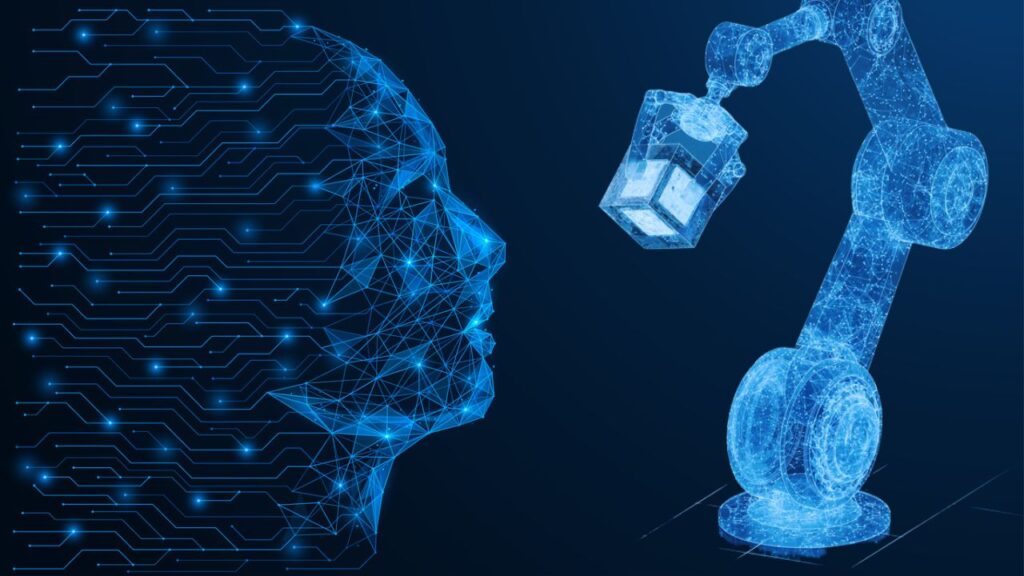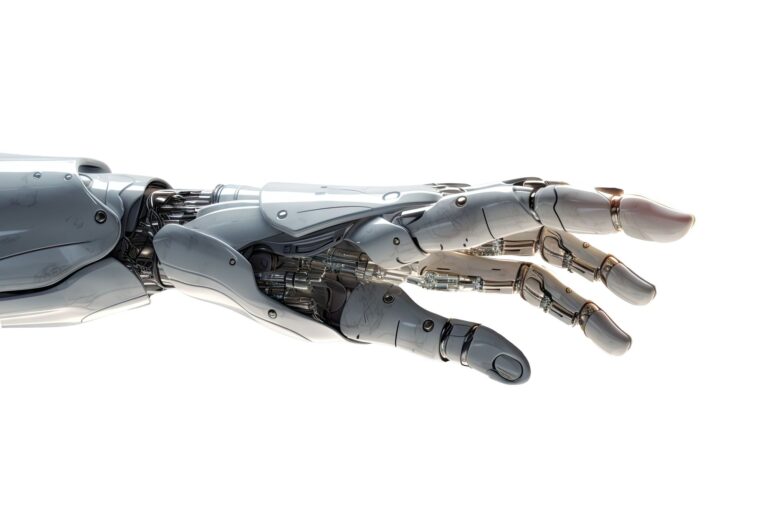Where are Artificial Intelligence and Robotics Heading?
We live in times when not long after imagining a certain robot, it becomes a reality. We are witnessing incredible advancements in Artificial Intelligence (AI), in Robotics and in the integration of Artificial Intelligence into Robotics. These emerging domains are radically changing the way we work, collaborate, and organize our lives. Artificial Intelligence and Robotics are used in numerous spheres and industries for different purposes and provide great benefits for businesses, governments, cities, factories, and individuals. Currently, there is almost no sphere in which AI and Robotics are not used. Thus, it is important to differentiate these terms, as they are often considered as interchangeable, which is not the case. On the other hand, these domains are not completely isolated with no intersection.
Artificial Intelligence vs Robotics
Although Artificial Intelligence and Robotics are distinct fields, they are not entirely separate entities with no overlap. These two entities might have different aims and applications, but they do overlap in one area, and this is where we talk about AI-enabled robots. Some robots are designed with Artificial Intelligence, but at present most are designed without Artificial Intelligence and are aimed at performing repetitive pre-programmed tasks and activities. In most cases, robots don’t need AI to carry out their duties, as the tasks they are required to do are pre-defined and predictable, thus they simply don’t require additional decision-making processes, learning patterns and developing new skills. For scenarios where most complex activities need to be accomplished, robots equipped with Artificial Intelligence (“AI-enabled robots” or “AI-integrated robots”) are used in different sectors and industries.
On the other hand, AI is now widely used separately to emulate human thinking, learning, developing new skills and solving problems. It is important to point out that software robots, or “bots”, are not part of the Robotics field, as these are computer programs, without physical presence, which are designed to autonomously perform virtual tasks. Often, software robots use Artificial Intelligence algorithms, as, for example, chatbots use AI to better respond to human questions and to be able to communicate more naturally. Thus, Artificial Intelligence, Robotics, AI-enabled robots, and software robots are different but not unrelated terms, and cannot be used interchangeably, even though they overlap in certain areas.
More, it might be confusing to distinguish between these entities. It can be concluded that Artificial Intelligence and Robotics are closely related and interconnected rather than entirely distinct fields. The cross-over of these two entities is the entity of the AI-enabled robots, the field uniting both AI and Robotics. Artificial Intelligence and Robotics are becoming more and more interconnected, and this is the direction which will provide great advancements in numerous fields of our lives and the way we work, do business, and operate. We will be witnessing exciting developments in this area and the future of AI-enabled robots seems exceptionally promising.
Artificial Intelligence
Artificial Intelligence (AI) is a discipline under computer science, whose objective is the development of programs aimed at mimicking human intelligence and the process of thinking. Artificial Intelligence algorithms are programmed to learn, understand, detect patterns, perform decision-making processes, and achieve logic and reasoning. The vast usage of such AI algorithms can be found in almost every sphere of our lives. For example, AI algorithms are used in browser searches, social media, computer engines, etc. Although AI doesn’t require physical presence to operate as designed, sometimes it is used in Robotics. When applied to robots, Artificial Intelligence is used to achieve more complex tasks, which require more than just a pre-programmed set of instructions and steps for completion of a pre-defined range of predictable activities.
Robotics

Robotics is a discipline under computer science, which also involves engineering, electronics, and computing. Robotics is, figuratively put, technology with a physical presence – robots, which are designed to autonomously, or almost autonomously, perform tasks by undertaking a series of programmed actions. One exception is the case with telerobots, which are completely not autonomous and are controlled remotely. Generally, robots are used for tasks which are repetitive and/or too dangerous for humans.
Robotics in Different Industries
Robots are now used in numerous industries, such as healthcare, agriculture, manufacturing, and autonomous vehicles. The main benefit is their speed, precision and accuracy when performing tasks. Robotics have radically changed the face of many industries by automating boring, difficult, and time-consuming tasks, while optimizing processes and facilitating management.
Robotics in business
More and more businesses are starting to use robots to reduce costs, save time and achieve better results with less errors and greater accuracy and efficiency. For example, companies are using robots for deliveries, customer service and automating restaurant kitchen tasks.
Robotics in healthcare
Robots have great potential in the healthcare sector. Robots can perform complex surgeries, provide care for patients, assist doctors with diagnostics, deliver medicines and much more. When equipped with AI, robots can also assist in diagnosing diseases and providing medical predictions by analyzing Big Data.
Robotics in manufacturing
In manufacturing, robots play a key role in various situations and are used to automate work in factories, which not only provides greater accuracy, productivity, and flexibility, but also eliminates risk for human workers. Robots can be used for many activities, such as assembling cars, moving objects around warehouses, sorting parts, inspecting products, and lifting heavy objects.
Robotics in agriculture
When used in agriculture, robots not only perform hard and exhausting labor, but can also be used to optimize sustainability. For example, a robot can monitor crops, making sure enough water and sunshine are available, which saves resources and eliminates the risk of loss of agriculture production.
Robotics in defense
In defense and military, robots can have numerous applications. Such are the drones for defense and robots which are sent to dangerous areas.
Robotics in aerospace
Robots are vastly used in space technology, as they don’t have the physical limitations of humans in space. Rovers, giant robotic hands, and automated utilities in spaceships are just some of the examples of the broad usage of robotics in aerospace.
Integration of Artificial Intelligence into Robotics: AI-enabled robots

When AI is applied to robots, this enables them to make decisions autonomously and to learn and adapt to their environment. Such robots are called AI-enabled robots (or AI-integrated robots) and are not so limited in their functionality, compared to the ‘non-intelligent’ robots. The application and usage of such more sophisticated robots is gradually increasing in more and more spheres. For example, when AI is applied to a warehouse robot, the robot can learn and adapt to its surroundings, with the use of Machine Learning, sensors, Computer Vision, etc., to better navigate within the warehouse, evade obstacles and change routes. Companion and care-giving robots are one remarkable example of the application of AI in robotics.
Artificial Intelligence and Software Robots
It is important to note that software robots are not actually robots, but programs which are designed to perform specific tasks. Examples of such software robots are search engine “bots”, chatbots, and Robotic Process Automation (RPA). Sometimes, AI can be applied to software bots in more complex projects, requiring for instance Big Data analysis and Machine Learning.
Benefits of AI and Robotics
The advantages of AI and Robotics for businesses and industries are countless. These emerging technologies are enabling innovation in all spheres of our lives and are increasingly applied to more and more industries and fields. DELMIA Robotics, a software powered by Dassault Systèmes’ 3DEXPERIENCE platform, can be of great benefit for many industries, such as engineering, aerospace, defense, construction, supply chain, business services and industrial equipment. DELMIA solutions for robot programming and modelling in production are created to address some of the most challenging situations in manufacturing and production, by empowering efficient planning, management, optimization, and execution of business and industrial operations.
Robotics and Artificial Intelligence are indeed the future, as they have limitless potential to facilitate and improve the quality of our lives and the way we work, do business, manufacture, travel, entertain and produce. The future implications of the wide-spread usage of these emerging technologies are yet to be reviewed and discussed in detail in a consecutive article, covering potential challenges and ethical considerations. Robotics and AI not only help us with the automation of tasks and activities in business, industry goals and in daily life, but also have the capability to be used for solving some of the world’s most alarming problems. AI and Robotics can be used to shape our future and create a better world, built around equality and sustainability.
About the author:
https://www.linkedin.com/in/elitsa-krumova/; https://elitsakrumova.com/
Follow on Twiiter: @Eli_Krumova

